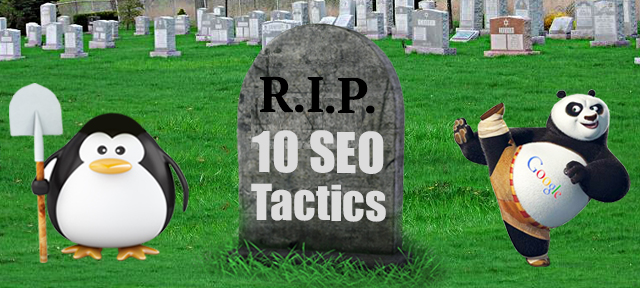Ever since Google launched the Penguin update back in April 2012, the SEO community has debated the impact of negative SEO, a practice whereby competitors can point hundreds or thousands of negative backlinks at a site with the intention of causing harm to organic search rankings or even completely removing a site from Google's index. Just jump over to Fiverr and you can find many gigs offering thousands of wiki links, or directory links, or many other types of low-quality links for $5.
By creating the Disavow Links tool, Google acknowledged this very real danger and gave webmasters a tool to protect their sites. Unfortunately, most people wait until it's too late to use the Disavow tool; they look at their backlink profile and disavow links after they've been penalized by Google. In reality, the Disavow Links tool should be used before your website suffers in the SERPs.
Backlink audits have to be added to every SEO professional's repertoire. These are as integral to SEO as keyword research, on-page optimization, and link building. In the same way that a site owner builds links to create organic rankings, now webmasters also have to monitor their backlink profile to identify low quality links as they appear and disavow them as quickly as they are identified.
Backlink audits are simple: download your backlinks from your Google Webmaster account, or from a backlink tool, and keep an eye on the links pointing to your site. What is the quality of those links? Do any of the links look fishy?
As soon as you identify fishy links, you can then try to remove the links by emailing the webmaster. If that doesn't work, head to Google's disavow tool and disavow those links. For people looking to protect their sites from algorithmic updates or penalties, backlink audits are now a webmaster's best friend.
If your website has suffered from lost rankings and search traffic, here's a method to determine whether negative SEO is to blame.
A Victim of Negative SEO?
A few weeks ago I received an email from a webmaster whose Google organic traffic dropped by almost 50 percent within days of Penguin 2.0. He couldn't understand why, given that he'd never engaged in SEO practices or link building. What could've caused such a massive decrease in traffic and rankings?
The site is a 15-year-old finance magazine with thousands of news stories and analysis, evergreen articles, and nothing but organic links. For over a decade it has ranked quite highly for very generic informational financial keywords – everything from information about the economies of different countries, to very detailed specifics about large corporations.
With a long tail of over 70,000 keywords, it's a site that truly adds value to the search engine results and has always used content to attract links and high search engine rankings.
The site received no notifications from Google. They simply saw a massive decrease in organic traffic starting May 22, which leads me to believe they were impacted by Penguin 2.0.
In short, he did exactly what Google preaches as safe SEO. Great content, great user experience, no manipulative link practices, and nothing but value.
So what happened to this site? Why did it lose 50 percent of its organic traffic from Google?
Backlink Audit
I started by running a LinkDetox report to analyze the backlinks. Immediately I knew something was wrong:
Upon further investigation, 55 percent of his links were suspicious, while 7 percent (almost 500) of the links were toxic:
So the first step was to research those 7 percent toxic links, how they were acquired, and what types of links they were.
In LinkDetox, you can segment by Link Type, so I was able to first view only the links that were considered toxic. According to Link Detox, toxic links are links from domains that aren't indexed in Google, as well as links from domains whose theme is listed as malware, malicious, or having a virus.
Immediately I noticed that he had many links from sites that ended in .pl. The anchor text of the links was the title of the page that they linked to.
It seemed that the sites targeted "credit cards", which is very loosely in this site's niche. It was easy to see that these were scraped links to be spun and dropped on spam URLs. I also saw many domains that had expired and were re-registered for the purpose of creating content sites for link farms.
Also, check out the spike in backlinks:
From this I knew that most of the toxic links were spam, and links that were not generated by the target site. I also saw many links to other authority sites, including entrepreneur.com and venturebeat.com. It seems that this site was classified as an "authority site" and was being used as part of a spammers way of adding authority links to their outbound link profile.
Did Penguin Cause the Massive Traffic Loss?
I further investigated the backlink profile, checking for other red flags.
His Money vs Brand ratio looked perfectly healthy:
His ratio of "Follow" links was a little high, but this was to be expected given the source of his negative backlinks:
Again, he had a slightly elevated number of text links as compared to competitors, which was another minor red flag:
One finding that was quite significant was his Deep Link Ratio, which was much too high when compared with others in his industry:
In terms of authority, his link distribution by SEMrush keyword rankings was average when compared to competitors:
Surprisingly, his backlinks had better TitleRank than competitors, meaning that the target site's backlinks ranked for their exact match title in Google – an indication of trust:
Penalized sites don't rank for their exact match title.
The final area of analysis was the PageRank distribution of the backlinks:
Even though he has a great number of high quality links, the percentage of links that aren't indexed in Google is substantially great. Close to 65 percent of the site's backlinks aren't indexed in Google.
In most cases, this indicates poor link building strategies, and is a typical profile for sites that employ spam link building tactics.
In this case, the high quantity of links from pages that are penalized, or not indexed in Google, was a case of automatic links built by spammers!
As a result of having a prominent site that was considered by spammers to be an authority in the finance field, this site suffered a massive decrease in traffic from Google.
Avoid Penguin & Unnatural Link Penalties
A backlink audit could've prevented this site from being penalized from Google and losing close to 50% of their traffic. If a backlink audit had been conducted, the site owner could've disavowed these spam links, performed outreach to get these links removed, and documented his efforts in case of future problems.
If the toxic links had been disavowed, all of the ratios would've been normalized and this site would've never been pegged as spam and penalized by Penguin.
Backlink Audits
Whatever tool you use - whether it's Ahrefs, LinkDetox, or OpenSiteExplorer – it's important that you run and evaluate your links on a monthly basis. Once you have the links, make sure you have metrics for each of the links in order to evaluate their health.
Here's what to do:
- Identify all the backlinks from sites that aren't indexed in Google. If they aren't indexed in Google, there's a good chance they are penalized. Take a manual look at a few to make sure nothing else is going on (e.g., perhaps they just moved to a new domain, or there's an error in reporting). Add all the N/A sites to your file.
- Look for backlinks from link or article directories. These are fairly easy to identify. LinkDetox will categorize those automatically and allow you to filter them out. Scan each of these to make sure you don't throw out the baby with the bathwater, as perhaps a few of these might be healthy.
- Identify links from sites that may be virus infected or have malware. These are identified as Toxic 2 in LinkDetox.
- Look for paid links. Google has long been at war with link buying and it's an obvious target. Find any links that have been paid and add them to the list. You can find these by sorting the results by PageRank descending. Evaluate all the high PR links as those are likely the ones that were purchased. Look at each and every one of the high quality links to assess how they were acquired. It's almost always pretty obvious if the link was organic or purchased.
- Take the list of backlinks and run it through the Juice Tool to scan for other red flags. One of my favorite metrics to evaluate is TitleRank. Generally, pages that aren't ranking for their exact match title have a good chance of having a functional penalty or not having enough authority. In the Juice report, you can see the exact title to determine if it's a valid title (for example, if the title is "Home", of course they won't rank for it, whether they have a penalty). If the TitleRank is 30+, you can review that link by doing a quick check, and if the site looks spammy, add it to your "Bad Links" file. Do a quick scan for other factors, such as PageRank and DomainAuthority, to see if anything else seems out of place.
By the end of this stage, you'll have a spreadsheet with the most harmful backlinks to a site.
Upload this Disavow File, to make sure the worst of your backlinks aren't harming your site. Make sure you then upload this disavow file when performing further tests on Link Detox as excluding these domains will affect your ratios.
Don't be a Victim of Negative SEO!
Negative SEO works; it's a very real threat to all webmasters. Why spend the time, money, and resources building high quality links and content assets when you can work your way to the top by penalizing your competitors?
There are many unethical people out there; don't let them cause you to lose your site's visibility. Add backlink audits and link profile protection as part of your monthly SEO tasks to keep your site's traffic safe. It's no longer optional.
.png)















